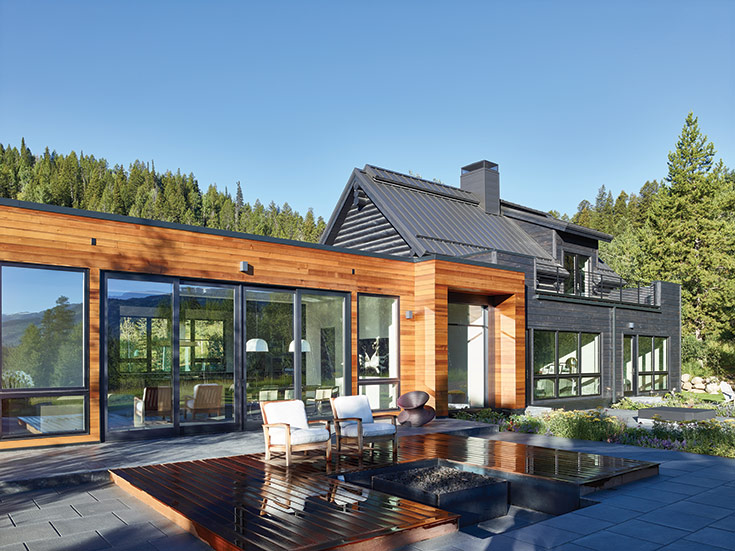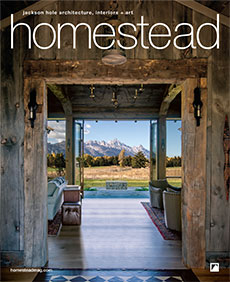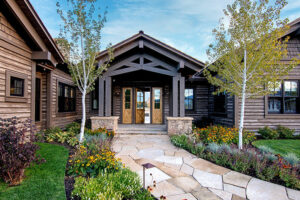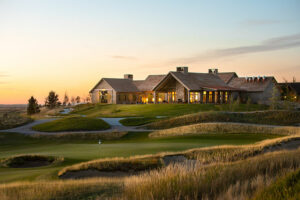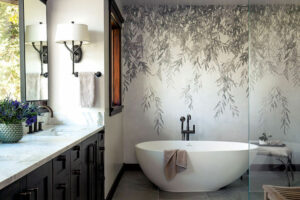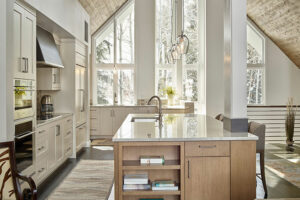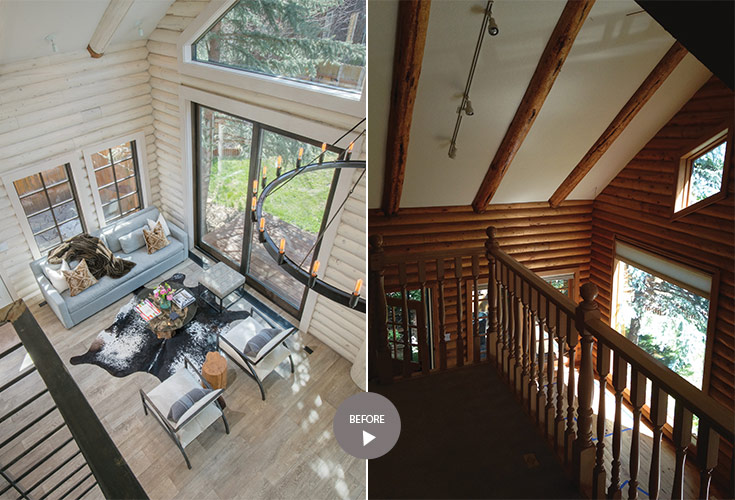
Story By
Julie Fustanio Kling
Photos By
Sargent Schutt + David Agnello
As the sun moves across the sky, the Chinese believe the symbols of yin and yang gradually trade places with each other, revealing what was obscured and obscuring what was revealed. So too goes the modernization of log homes. These two renovation projects showcase the possibilities in black (yin) and white (yang). In both cases, large windows opened up the traditional Western cabin feel, and steel was introduced to create a more industrial, black-and-white look. Floating staircases draw the eye up and out rather than down and in.
1 CONTRAST IN COLOR
The first example is a log cabin in East Jackson. “Before, the home was dark and cavelike,” says designer John Martin, of J. Martin Design. “I wanted to give the honey-colored logs a fresh, new look and lighten the room.”
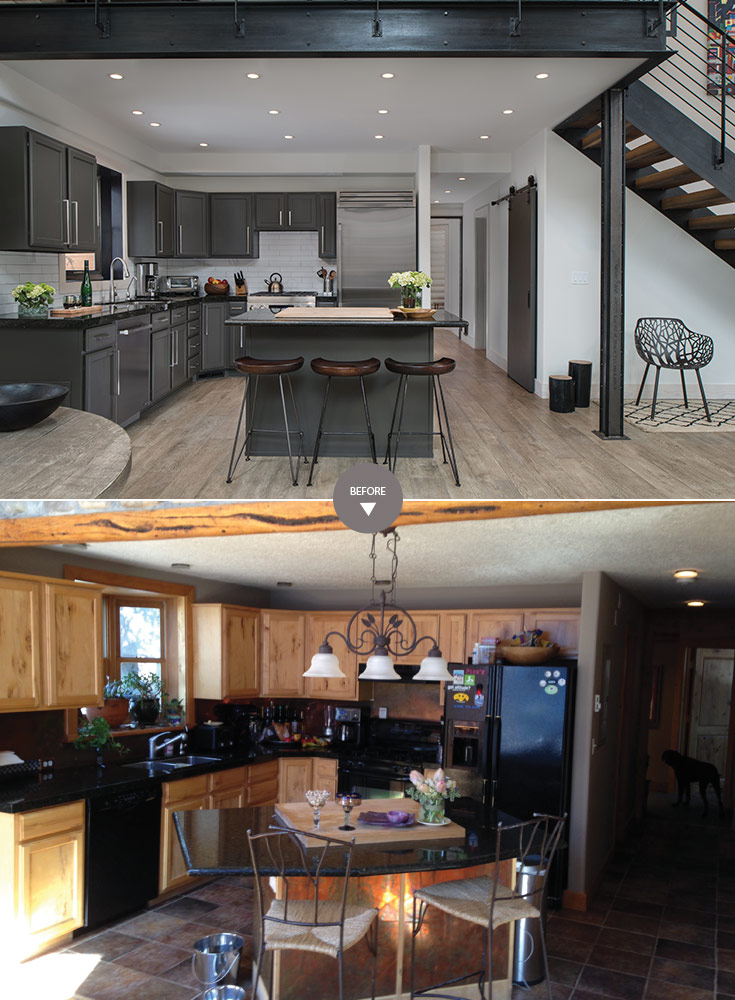
After grinding the stain and clear coat off the logs, he bleached out the pink and yellow tones. He then used a guest bedroom as his laboratory to test the color and get the right whitewashed look. “I wanted the logs to be opaque, so I had to thin down the alabaster stain in order to see the grain,” he says.
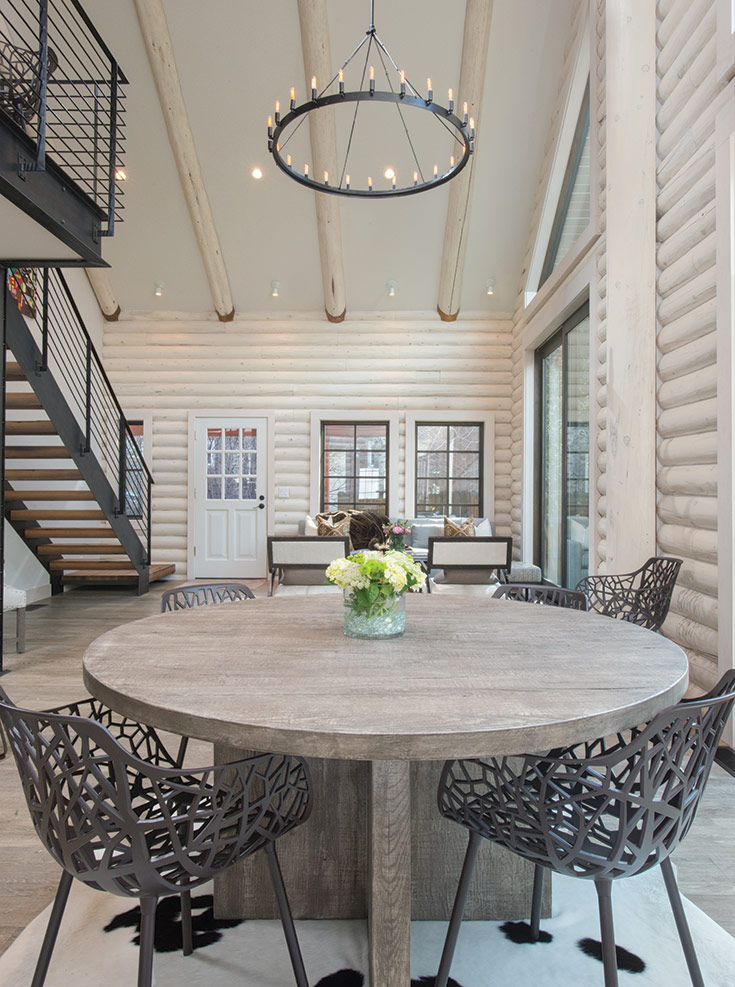
Because the existing frame couldn’t support concrete floors, he chose a porcelain faux wood tile from Italy. Finally, he smoothed out the textured drywall and replaced the track lighting with recessed cans.
“I didn’t want to have a lot of different elements competing for attention,” he says. “I just wanted three or four showstoppers, so I chose the windows, the steel, the Italian tile and the white logs.”
2 MATERIAL CHANGES
The honest expression of the log structure in this Indian Paintbrush project was an interesting challenge to architect Peggy Gilday. “Experimentation with stains and finishes brings out the richness of the wood grain while omitting the orange color inherent in aged, clear finishes,” she says. “Historically, the chinking (the caulk substance between the logs) may be a contrasting color, which can be distracting.”
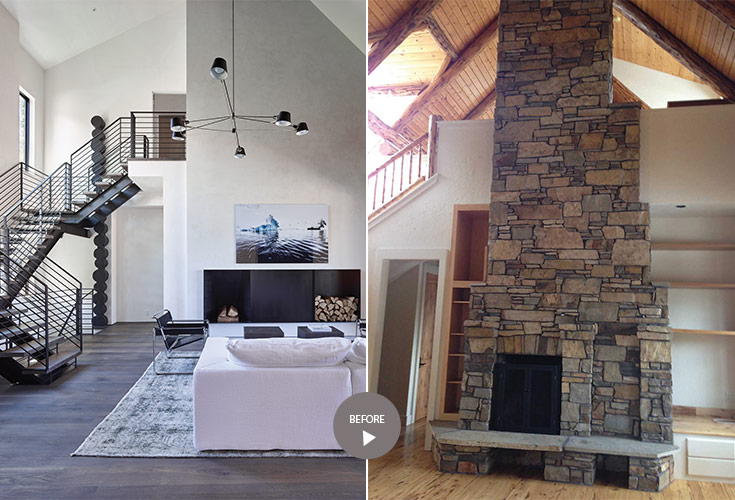
By blacking out the log stack, she was able to obscure the chinking and modernize the old building with the addition of tongue-and-groove Western red cedar. Other elements, including a sleek, modern staircase and a plastered fireplace replacing the heavy stone, simplified the interior.
“I think Peg had a great eye to go black with the logs,” says Teton Heritage Builders partner Mark Dalby. He had to shore up the log to put in the steel and connect the cabins to the addition.
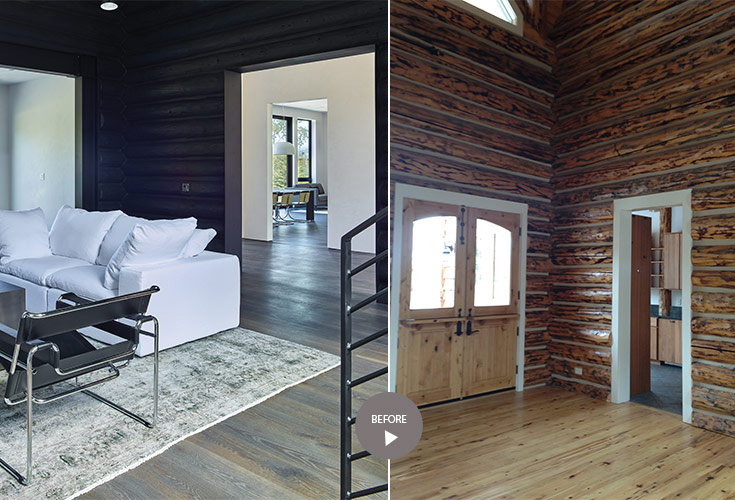
The front entrance was designed as an art gallery for the owner’s collection. The space is punctuated on either end by Italian steel-framed doors and windows. “This was a cool way to show some functional steel,” Dalby says.
The rift white oak cabinetry in the kitchen was hand selected so that the wood grain carries through the doors and drawers sequentially.
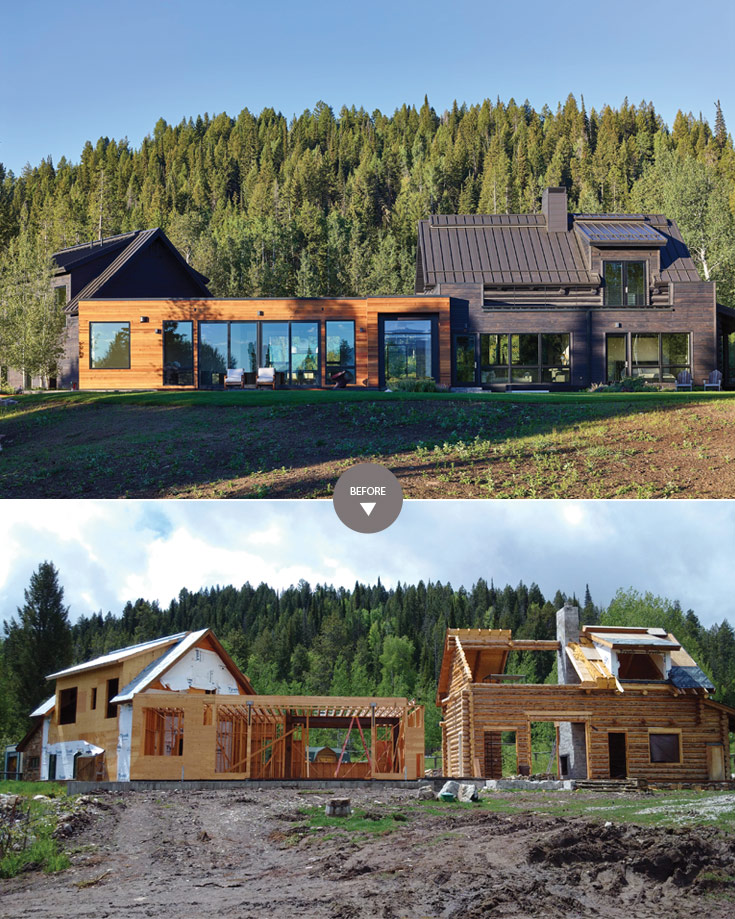
For Russ Weaver, another partner at Teton Heritage Builders, log isn’t as limiting as it appears. “Just think, there’s a square timber in every round log,” he says.
